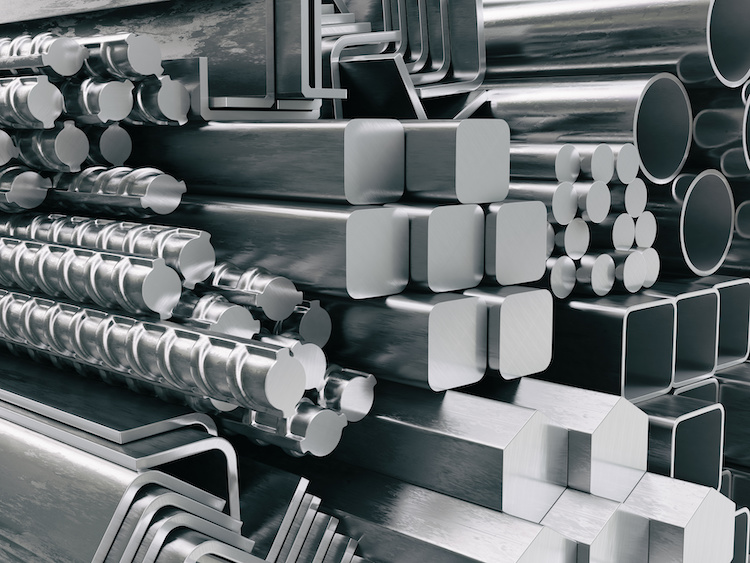Reliable Steel Fixing Providers: Making Certain Architectural Integrity
Wiki Article
Comprehensive Analysis of Cutting-Edge Techniques in Steel Fabrication Market
As the steel fabrication industry proceeds to evolve, the integration of innovative techniques has actually become vital for remaining competitive and meeting the needs of modern production standards. From laser reducing improvements to the usage of robotics and 3D printing in steel manufacturing, the landscape of construction techniques is rapidly changing. With each innovation bringing its own set of obstacles and benefits, an extensive analysis of these strategies is critical for firms intending to improve their processes, enhance precision, and eventually, raise the high quality of their steel fabrication output. In this vibrant sector where modern technology plays a pivotal role, understanding the subtleties of these cutting-edge methods is not just an alternative but a necessity for those looking to advance in the ever-evolving globe of steel manufacture.Laser Cutting Innovations
In the realm of steel fabrication, laser cutting developments have transformed the precision and effectiveness of steel shaping procedures. By harnessing the power of concentrated laser beams, manufacturers can now achieve exceptional degrees of accuracy when puncturing numerous types of steels. This technology makes it possible for detailed styles to be performed with marginal material wastage, making it an affordable option for markets calling for high precision parts.One of the vital benefits of laser cutting is its capability to manage a wide range of products, consisting of stainless-steel, light weight aluminum, and carbon steel, effortlessly. The process produces tidy, burr-free sides, eliminating the requirement for extra finishing steps. The non-contact nature of laser cutting decreases the risk of product contamination, resulting in higher top quality end items.
In addition, laser reducing equipments can be configured to make swift, accurate cuts, substantially lowering production time contrasted to typical reducing methods. This speed and accuracy make laser reducing particularly suitable for automation environments where efficiency is extremely important. As innovation remains to advance, laser cutting is positioned to play a progressively essential role in the steel fabrication market.

CNC Machining Innovations
The advancement of CNC machining modern technologies has ushered in a new age of accuracy and effectiveness in the steel fabrication industry. Computer System Numerical Control (CNC) equipments have actually changed steel manufacture by using unequaled accuracy and repeatability in the manufacturing process. steel fabrication melbourne. One of the crucial developments in CNC machining is the integration of sophisticated software program systems that make it possible for real-time monitoring and adjustments, resulting in enhanced productivity and quality assuranceIn addition, the advancement of multi-axis CNC equipments has actually permitted the construction of intricate steel parts with elaborate layouts that were previously testing to produce. These equipments can perform a vast array of machining operations, including milling, exploration, transforming, and grinding, all with high levels of precision.
In addition, the consolidation of automation and robotics in CNC machining has structured manufacturing procedures, lowered preparations, and minimized the margin of mistake. This assimilation of cutting-edge modern technologies not just enhances efficiency however likewise makes sure constant quality throughout all fabricated steel components. To conclude, CNC machining advancements remain to drive innovations in the steel fabrication industry, setting brand-new standards for accuracy and efficiency.
Automated Welding Technologies
Automated welding technologies have actually reinvented the steel construction sector, enhancing efficiency and accuracy in the welding procedure. These sophisticated innovations use computer-controlled systems to automate the welding procedure, bring about higher performance degrees and improved weld quality. Among the crucial benefits of automated welding is the capacity to carry out complex welds with constant accuracy, decreasing the possibility of errors and remodel.Robot welding systems are at the forefront of automated welding innovations, offering unequaled rate and accuracy. These systems can handle a large range of welding tasks, from straightforward to complex, with convenience (steel fixing). By utilizing sophisticated sensing units and software application, robot welders can adjust to variants in product and joint geometry, making sure an uniform and trusted weld
Moreover, automated welding steel fabrication melbourne modern technologies boost workplace safety by lessening the exposure of human welders to harmful fumes and extreme heat. As the steel construction sector remains to advance, integrating automated welding technologies will certainly be important for business looking to stay competitive and satisfy the growing needs for top notch bonded products.
Robotics Integration in Construction
Making use of robotic systems in construction processes has actually become a critical strategy for enhancing effectiveness and accuracy in modern-day manufacturing settings. Robotics assimilation in steel construction offers a myriad of advantages, consisting of boosted performance, improved top quality control, and boosted security actions. These innovative robot systems are equipped with advanced sensing units and programming capabilities, enabling them to perform elaborate tasks with a high degree of accuracy and repeatability.One of the essential advantages of robotics assimilation in steel fabrication is the ability to automate repeated tasks, such as material handling, cutting, welding, and setting up procedures. This not only speeds up manufacturing cycles yet additionally minimizes the threat of human error, resulting in higher total item quality. In addition, robots can operate 24/7, considerably boosting manufacturing result and meeting limited task deadlines.

3D Printing in Steel Manufacturing
Having changed the steel fabrication sector through robotics integration, the expanding expedition of 3D printing in steel production is positioned to further advancement the world of modern-day manufacturing methods. 3D printing, also referred to as additive production, supplies unmatched layout flexibility and intricacy, enabling the development of detailed steel frameworks that were formerly unattainable through conventional production techniques. By utilizing computer-aided layout (CAD) software, suppliers can exactly manage the layer-by-layer deposition of steel product, resulting in parts with improved geometries and functionalities.Among the crucial benefits of 3D printing in steel manufacturing is its capacity to reduce material waste considerably. Unlike subtractive production procedures where excess material is cut away, 3D printing only utilizes the needed amount of steel required for the final part. This efficiency not just causes set you back savings however likewise straightens with lasting production practices by minimizing environmental influence.
In addition, 3D printing enables quick prototyping and customization, enabling for the manufacturing of small batches of complex steel components with short preparations. As the modern technology remains to mature and become more easily accessible, its assimilation right into mainstream steel manufacture processes is expected to drive innovation and efficiency across the market.
Final Thought
To conclude, the steel manufacture industry has seen considerable improvements in strategies such as laser cutting, CNC machining, automated welding, robotics assimilation, and 3D printing. These cutting-edge modern technologies have actually revolutionized the way steel items are made, leading to raised cost-effectiveness, accuracy, and efficiency. Continued investment in these ingenious strategies is important for the industry to remain competitive and meet the needs of modern-day production processes.As the steel manufacture industry proceeds to progress, the combination of innovative methods has become crucial for staying affordable and fulfilling the demands of contemporary manufacturing criteria.One of the key benefits of laser cutting is its capacity to handle a vast array of materials, consisting of stainless steel, aluminum, and carbon steel, with convenience.Automated welding innovations have transformed the steel manufacture market, boosting efficiency and precision in the welding procedure.Having transformed the steel construction sector via robotics integration, the burgeoning expedition of 3D printing in steel manufacturing is poised to further advance the world of contemporary manufacturing methods.In conclusion, the steel manufacture market has actually seen considerable improvements in techniques such as laser cutting, CNC machining, automated welding, robotics integration, and 3D printing.
Report this wiki page